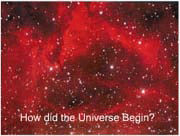The U.S. Department of Homeland Security will test its crowd-scanning facial recognition system, known as the Biometric Optical Surveillance System, or BOSS, at a junior hockey game this weekend, according to the Russian news agency RT.
With assistance from the Pacific Northwest National Laboratory, DHS will test its system at a Western Hockey League game in Washington state. The test will determine whether the system can distinguish the faces of 20 volunteers out of a crowd of nearly 6,000 hockey fans, to evaluate how successfully BOSS can locate a person of interest.
According to DHS, BOSS technology consists of two cameras capable of taking stereoscopic images of a face and a back end remote matching system. Stereoscopic images are two images of the same object, taken at slightly different angles that create an illusion of three-dimensional depth from two-dimensional images. The cameras transfer the pair of images to the remote matching system by way of fiber optic or wireless technology. The system then processes and stores the two images into a 3-D signature, which is the mathematical representation of the stereo-pair images that the system uses for matching.
With assistance from the Pacific Northwest National Laboratory, DHS will test its system at a Western Hockey League game in Washington state. The test will determine whether the system can distinguish the faces of 20 volunteers out of a crowd of nearly 6,000 hockey fans, to evaluate how successfully BOSS can locate a person of interest.
According to DHS, BOSS technology consists of two cameras capable of taking stereoscopic images of a face and a back end remote matching system. Stereoscopic images are two images of the same object, taken at slightly different angles that create an illusion of three-dimensional depth from two-dimensional images. The cameras transfer the pair of images to the remote matching system by way of fiber optic or wireless technology. The system then processes and stores the two images into a 3-D signature, which is the mathematical representation of the stereo-pair images that the system uses for matching.












